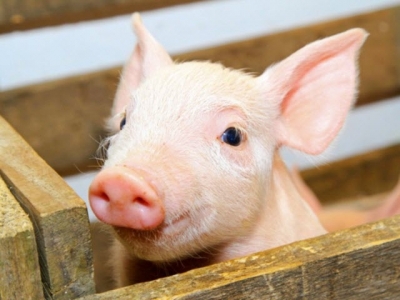Key challenge for the UK pork sector is litter size

The low number of pigs weaned per sow per year in all UK systems is still a major cause of that market’s relatively high cost of production and a factor that needs to be addressed if UK pig production costs are to remain competitive with the rest of Europe, finds a new report.
Litter size in UK pig production is the challenge – the number of pigs weaned per sow is below the EU average, despite a 2% hike seen in 2016.
In terms of the number of pigs born alive per litter, the UK is still not performing as well as its EU counterparts, concluded the UK’s Agriculture and Horticulture Board (AHDB) publication. Britain is below the EU average of 13.8 in that respect.
The AHDB says it carries out an annual review of pig performance metrics in ‘InterPIG countries’ to allow the UK pig industry to compare itself to other markets in terms of productivity.
The organization’s report also looks at areas where the UK pig industry can improve in order to raise its competitiveness and for it to remain profitable as Britain prepares to leave the EU.
The latest review contains data from 2016 and evaluates technical and financial performance including feed prices and costs in the UK, Austria, Belgium, Brazil, Canada, Denmark, Finland, France, Germany, Ireland, Italy, the Netherlands, Spain, Sweden and the US.
Pigs weaned per sow per year
It shows the overall average number of pigs weaned per sow per year in the European countries increased by 2% in 2016, up from 26.81 in 2015 to 27.53 last year, with Denmark achieving 32. Ireland showed the greatest increase, up 7% compared with 2015.
In Britain, the number of pigs weaned per sow rose 2% to 24.83 overall.
The non-EU countries – Brazil, Canada, US - all continued to perform below the EU average.
Feed price trend
Average EU feed prices were higher in 2016 than in 2015, confirmed the report.
All InterPIG member countries, except the UK, experienced an increase in feed costs compared to 2015. The UK saw a fall of 7%, compared to the 11% increase in Italy.
“With higher prices for raw materials, on average, pig feed prices were higher in 2016 than in 2015. Across the EU members of InterPIG, prices increased (in sterling terms) by an average of 4% compared to the previous year. There was a range of feed prices across the EU countries, with a difference of £80 (US$108 - January 2018 rate) per ton between the highest and lowest average farm feed price in 2016.”
Cost of production
The average cost of production in the EU countries analyzed in 2016 was £1.27 per kg deadweight, a nearly 8% increase on the previous year. Costs of production in the UK were near the EU average at £1.26, an over 4% decrease on the previous year, found the review.
“In 2016, Italy continued to have the highest costs at £1.50. The country with the lowest production costs in the EU continued to be Spain (£1.13).
On average, margins fluctuated throughout 2016, with the UK price below the estimated costs of production for the first seven months of the year. Across the EU countries that were sampled, there was a technical loss of 7p on every kg of pig meat produced, with only three EU countries (Belgium, Denmark, Spain) having production costs below the EU average reference price.”
Related news
 Weanling pigs may see digestion bump from additive zinc oxide nanoparticles
Weanling pigs may see digestion bump from additive zinc oxide nanoparticles Zinc oxide nanoparticles may offer a boost to feed, energy digestion for weanling pigs, but overall performance shows little change, say researchers.
 Nutritional research focus of new Kent swine facility
Nutritional research focus of new Kent swine facility Kent Nutrition Group is opening a swine research barn focusing on real-time assessment of nutritional research and ties between environmental conditions
 Dietary net energy levels may boost feed efficiency
Dietary net energy levels may boost feed efficiency Reducing crude protein levels and monitoring dietary net energy levels may offer producers a way to improve feed efficiency in heavy pigs, say researchers.